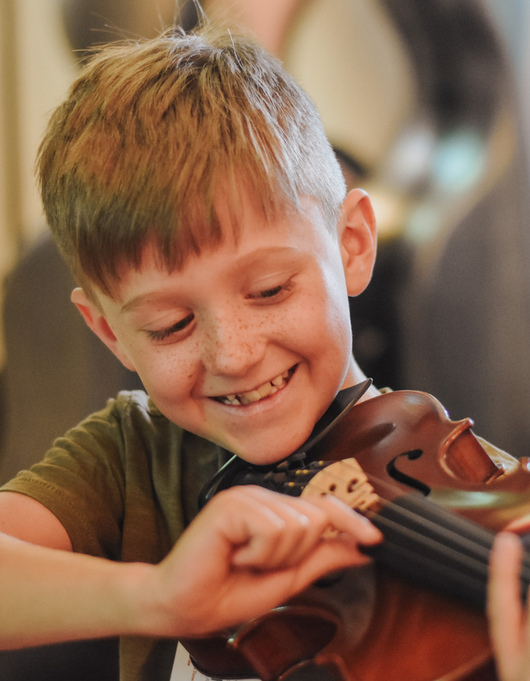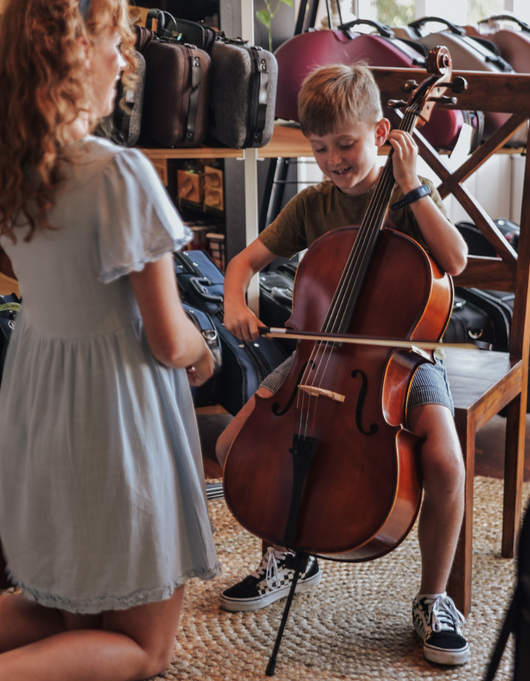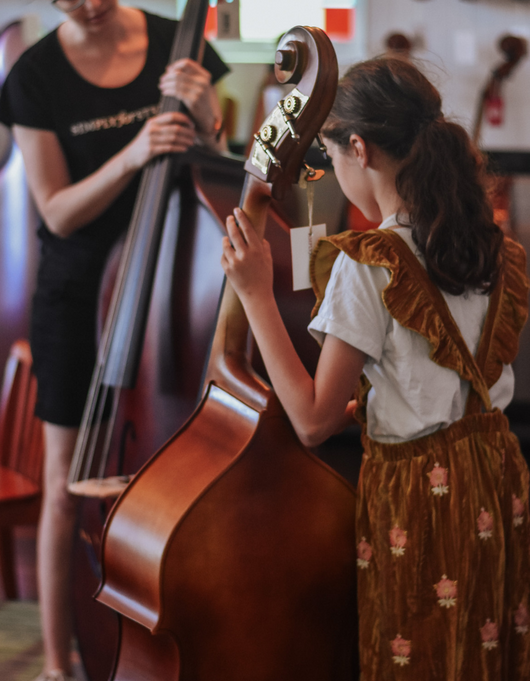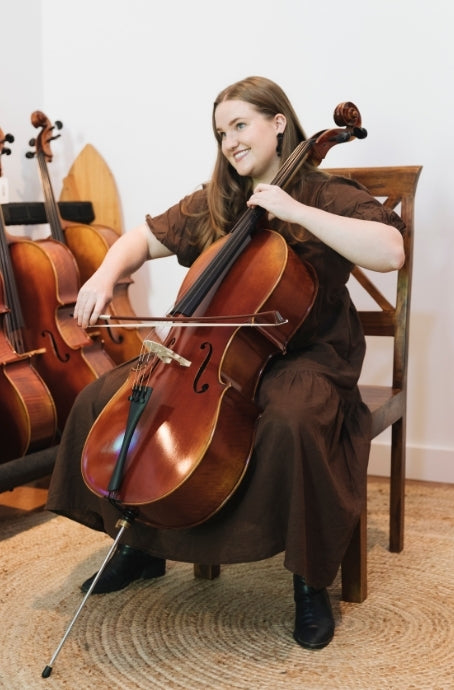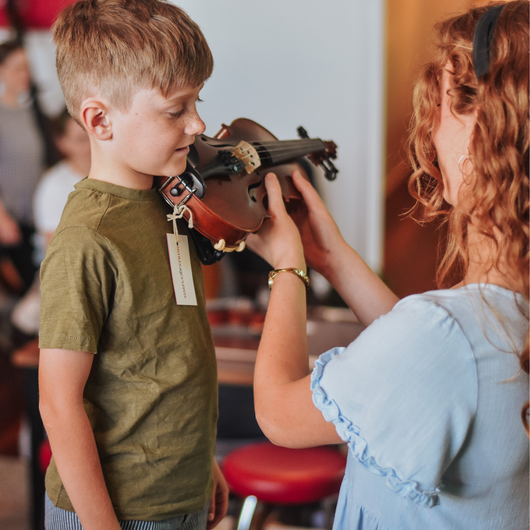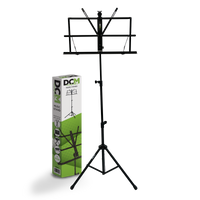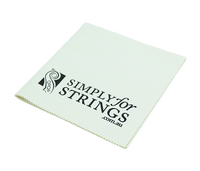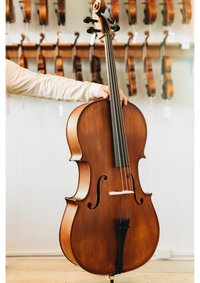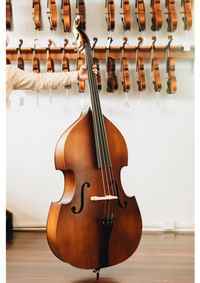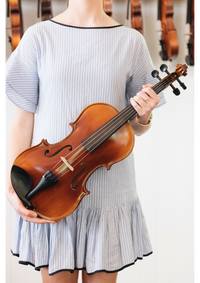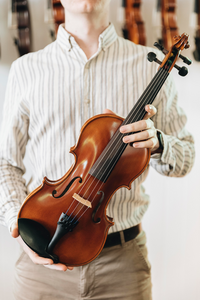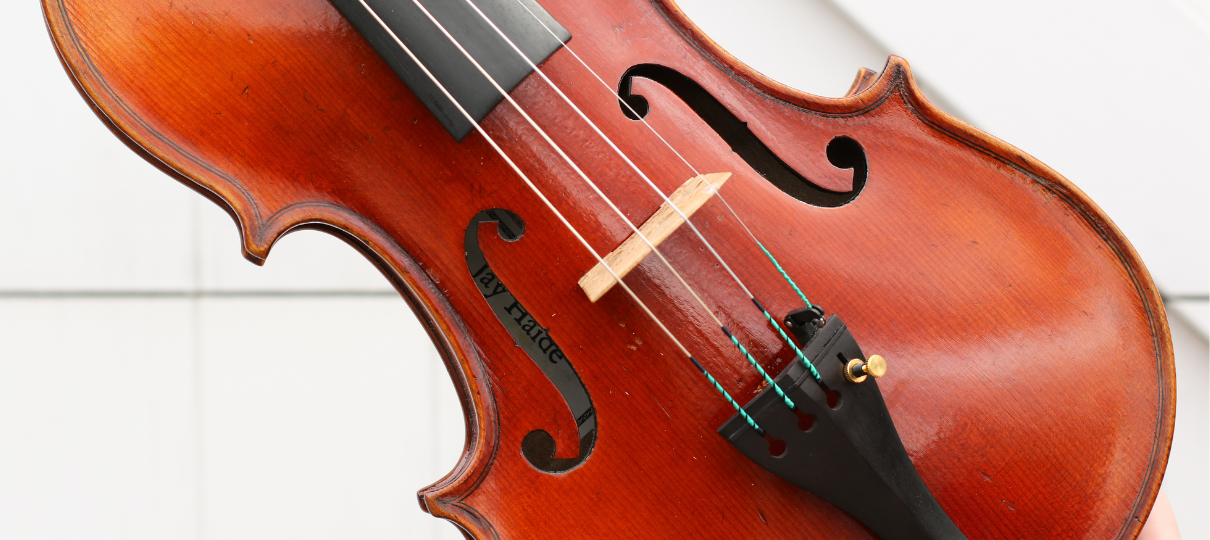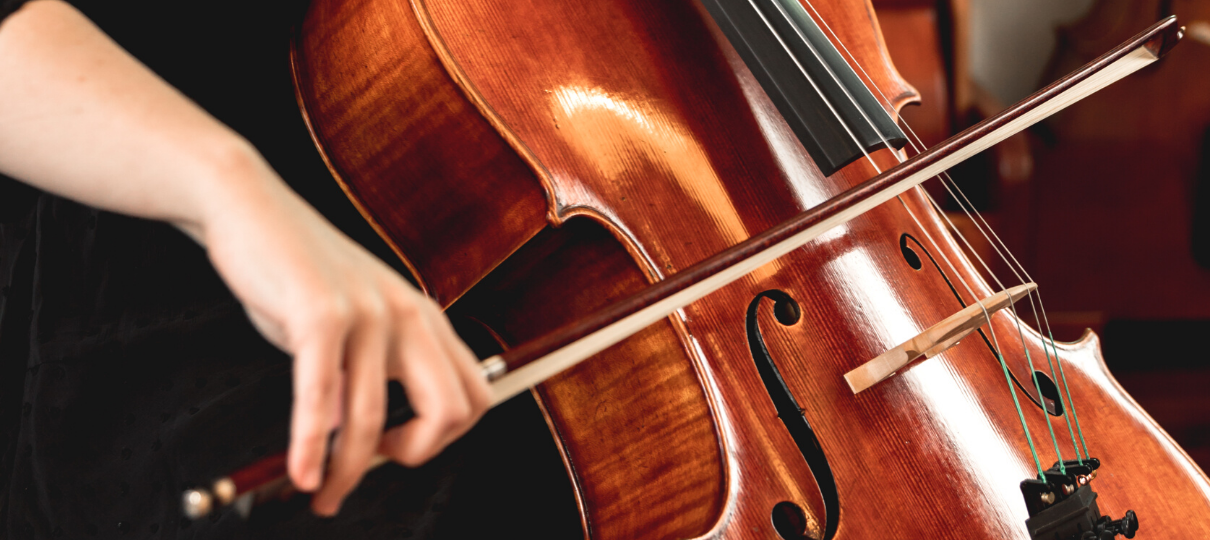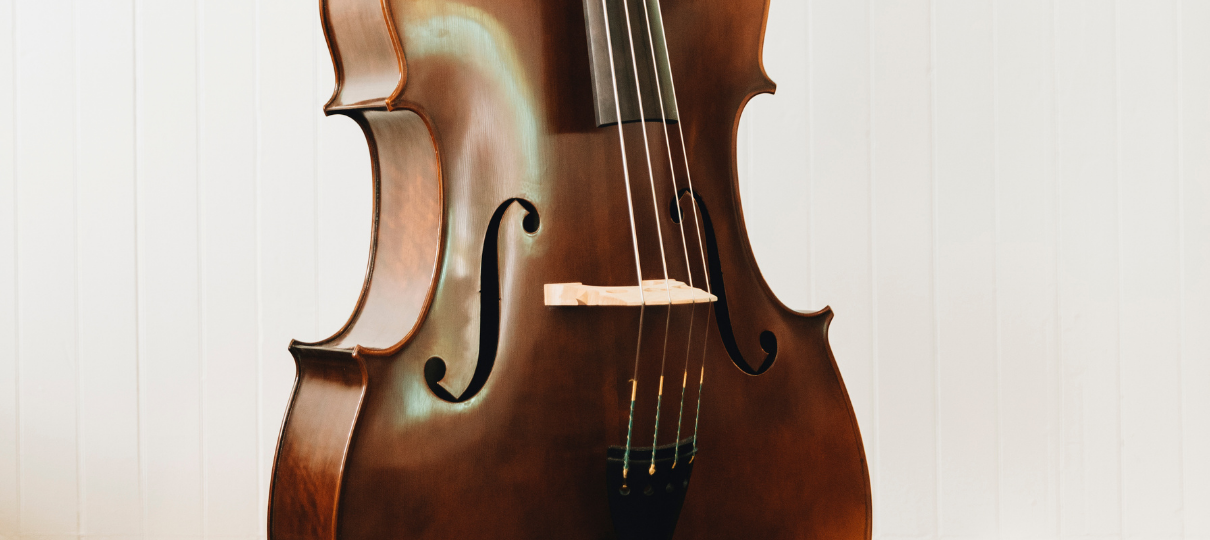Violin, Viola, Cello and Double Bass - What's The Difference?
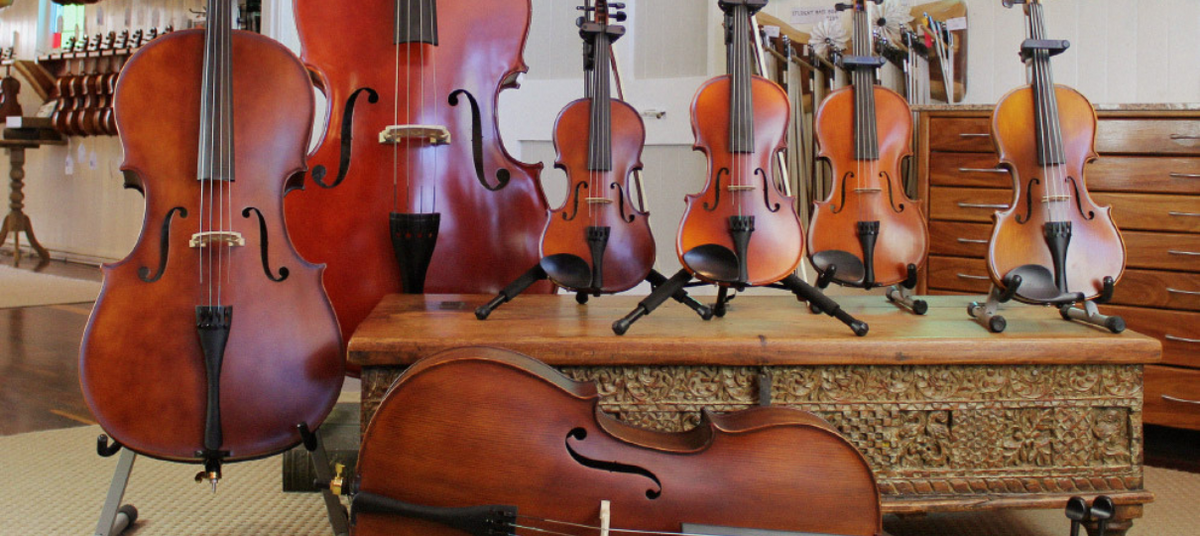
The stringed instrument family is a diverse and fascinating one. With a rich history dating back over 500 years for the violin alone, it’s no surprise that each instrument comes with its own extraordinary plethora of personality, sound, and possibility for budding music enthusiasts.
But what exactly is the difference between the violin, viola, cello and double bass?
In short, they are all distinguished by their unique sizes and sounds. Beginning from the deep pitch of the double bass all the way up to the sprightly sounding violin, each has its own individual personality suited to a range of melodies, harmonies, baselines and rhythms that can work to perfectly complement one another, or take centre stage as a solo.
So how can you be sure which instrument is right for you, and which would most align with your hopes and dreams as a musician? Let’s dive a little deeper into the unique qualities of each instrument and highlight exactly what makes each one the perfect fit for the musicians that play them.
Size
Double bass
The double bass comes in six sizes: 1/16, 1/10, ⅛, ¼, ½, ¾.
The size of double bass chosen by each musician is dependent on, and in direct relation to, their height and hand-size. While the double basses you’ll see playing at the edge of the orchestra can appear quite overwhelming in comparison to the instruments surrounding it, more often than not they are in fact ¾ sized instruments, which is the most common size for adults.
Cello
The cello comes in eight sizes: 1/16, 1/10, ⅛, ¼, ½, ¾, 4/4, ⅞
As the cello is played solely from a seated position, the size you choose will depend on your height and hand span. While you would assume that the 4/4 (or ‘full size’) is the go-to size for adults, the 7/8 is in fact the most popular as it allows for a slightly smaller and more common hand span.
Violin
As with the cello, the Violin comes in eight sizes: 1/32, 1/16, 1/10, 1/8, 1/4 ,1/2 , 3/4 , 4/4
Slightly different to the double bass and cello, violin sizing is mostly dependent on arm length and span as opposed to height. Most students will start on a 1/10 or an ⅛ depending on at which age they start learning – with some children learning on 1/16s or even a 1/32!
Viola
Violas are available from 11” and go all the way up to 17”, or even bigger!
Most violists usually play a 15.5” or 16” generally, but if you have a longer arm span and a sturdy frame you can extend to even larger instruments. There is debate around which viola size is best for adults, but in the end, it simply comes down to the preferences of each individual.
Difficulty
Each instrument in the stringed family comes with its own unique set of challenges, most of which are directly influenced by the musicians themselves. The artist’s size, experience, and endurance are all factors that impact the success of each instrument, and one that’s easier to handle for an adult may not be so for students who begin as children.
The double bass, for example, often towers above even adult performers, meaning they can be quite physically demanding to master, especially for children. It’s close relative, the cello, is also larger in size, however, has the added advantage of being played primarily from a seated position.
The violins and violas, on the other hand, are much more lightweight, however tend to accompany more complex and fast-paced melodies that can prove more challenging to perfect.
Sound
The double bass has the lowest pitch of the string family, making it a staple in modern symphony orchestras as well as in solo, chamber, jazz and classical music. It bellows at an octave lower than the cello, and acts as the deep, dark harmony and accompanying baseline upon which symphonies are built. However, it can also perform some lively melodies when used in a jazz context, as it can be played both with the bow and by simply plucking the strings during riffs.
Cellos have a strong, deep sound, and of the stringed family can be most closely compared to the human voice. It has a variety of tones, from warm and melancholic through to lighter, brighter notes. They can be used to maintain the base or harmony but can also be a weighty and powerful addition to the melody.
After the cello comes the viola to add an eloquent and sensuous harmony five notes lower than that of the violin. It has a larger role than the larger stringed instruments, providing a robust and lively addition to the rhythm and harmony of the violins.
While all these instruments have their own unique voice and purpose to lend to an orchestra, perhaps none shine quite so brightly as the star of the show – the violin. The violin has the highest pitch of these stringed instruments, maintaining the melody and providing the rhythmic and harmonic undertones for the entire orchestra.
Famous pieces and musicians
There is truly no ‘right or wrong’ when it comes to which instrument any one individual should pursue, though for some of the greats throughout history, you would be forgiven for believing they were born with a natural predisposition to excel in their instrument of choice.
The violin has undoubtedly the widest array of instantly recognizable and ‘famous’ patrons, with the likes of Beethoven, Bach, Mozart and Tchaikovsky to name just a few amongst its masters. With such a diverse and rich musical history, it’s hard to distinguish one great masterpiece above the other, but the common consensus confirms that Beethoven’s Violin Sonata No. 9, Bach’s Partita No. 2, Paganini’s Caprice No. 24, and Vivaldi’s The Four Seasons are just a few of the many classics that will stand the test of time.
While the viola isn’t always the star of the show, some composers have made it their life’s work to create symphonies specifically around highlighting this unique and lively instrument. Amongst the standouts in history surely must be the Sinfonia Concertante, K 364 by Mozart, Belioz’s Harold in Italy, and Schumann’s set of short pieces known as Fairytale Pictures.
There are no bounds to the depth and breadth of emotion that the cello is able to portray, with perhaps the most infamous example being Bach’s Cello Suite No. 1. Most if not, or dare we say, all aspiring cellists will become intimately familiar with at least one of Bach’s pieces throughout their musical journey, which are amongst the most frequently performed widely known cello pieces in history. Modern-day maestro Yo-Yo Ma is perhaps one of the most prolific and masterful cellists that has mastered Bach, among many others. He has released over 75 albums that speak to his genius and popularity and is a family favourite here at Simply For Strings.
The double bass is truly unique in the sense that, in addition to its place in the orchestra, it’s also a prevalent member of most jazz bands throughout history. As such, you find quite the eclectic mix of music and masters when looking into its rich past, with everyone from Bottesini and Rossini through to jazz legend Paul Chambers making the cut of infamous double bass maestros.
Tips on learning
As we’ve learned so far, each instrument in the string family comes with its own unique set of nuances and personality. The foundations for learning them, however, are more aligned than you might think.
Beginning the endeavor of mastering any new skill always has its foundations in one core truth – practice makes perfect. As the true virtuosos will tell you, along with our family of professionals here at Simply for Strings, musicians are perpetual learners. You must make the time, all the time, to practice and build on your craft. And this learning doesn’t simply apply to melody. Reading music, learning scales, and understanding tuning and maintenance are all essential parts of becoming a good (and eventually, a great) musician.
Our recommendation? Start small. Take the time to get to know each instrument in person – something we always welcome here at the Simply for Strings studio – until you find your perfect match. From there, find a teacher, mentor, or online program that you feel serves your needs, and begin with an achievable and realistic goal. If you try to take on Bach during your first lesson, chances are your passion for strings will fade as quickly as it began. Remember, music is a lifelong pursuit, not a short-term game.
Instrument and accessory recommendations
As with any great pursuit, there are a plethora of essential accessories that can accompany on your road to success. While there are a number of ‘nice to haves’ not essential to beginners, here are a few of the basics that we would recommend having on hand when starting your journey with stringed instruments:
Music stand
Music stands are not only vital for ease of reference when playing, they are also essential to counteract many of the common posture and injury concerns associated with playing a stringed instrument. They don’t have to be expensive, but you will notice a marked difference when you’re able to maintain a comfortable stance while having your music easily at hand.
Quality rosin
Rosin is applied to the hairs of your bow to assist in causing the friction necessary for sound vibration. A good rosin allows the bow to slide across the strings without jarring or skipping and will offer a smoother and easier quality of sound. It doesn’t need to be expensive, but you’ll want to make sure it’s made well to ensure you aren’t jeopardizing the life and sensitivity of your bow and strings.
Cleaning cloth
Investing in a stringed instrument is a big commitment and maintaining good cleaning habits is the surest way to keep it in prime condition for many years to come. Having a good quality, soft, microfibre cleaning cloth close at hand is an essential part of daily maintenance and taking the few seconds to wipe down your instrument (and strings!) on a daily basis will offer a reward that’s tenfold.
So, you see, there truly is no right or wrong answer when it comes to choosing the stringed instrument for you. Each comes with its own unique set of benefits, nuances, and undeniable qualities that have made the entire string family such prolific staples throughout modern history.
If you’d like the chance to become more familiar with these instruments in person, or have any questions about which might be the right fit for you, our team is always available either in our studio or online to offer you all the guidance you need to follow your musical dreams.



